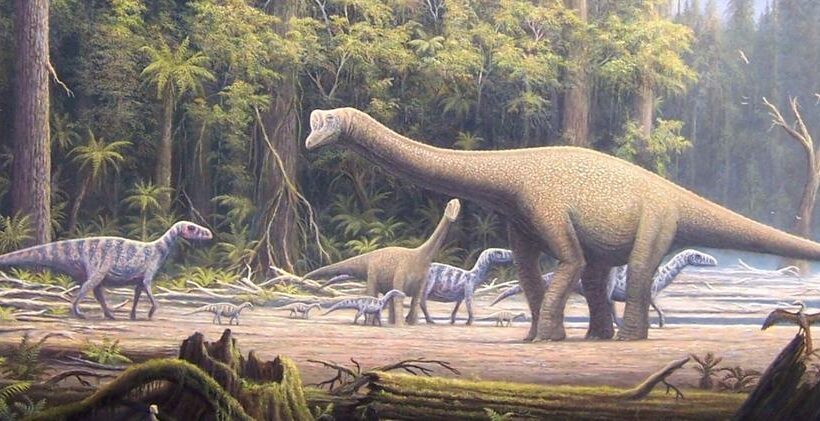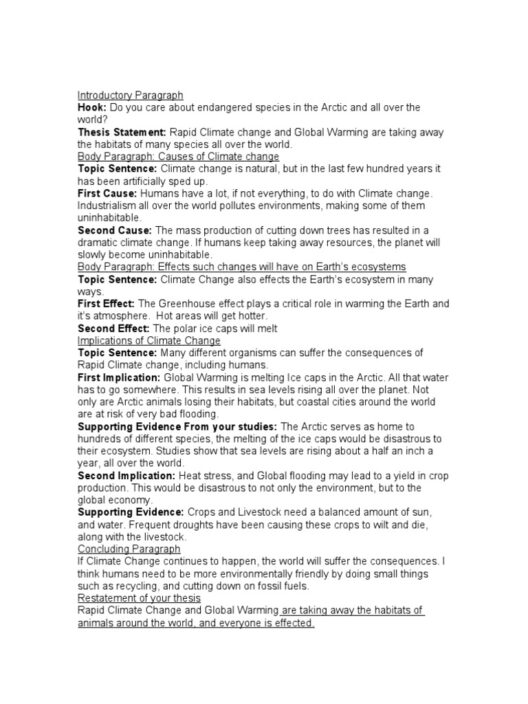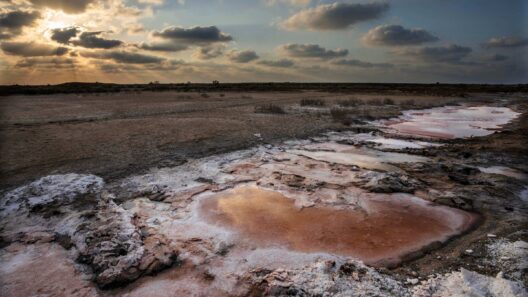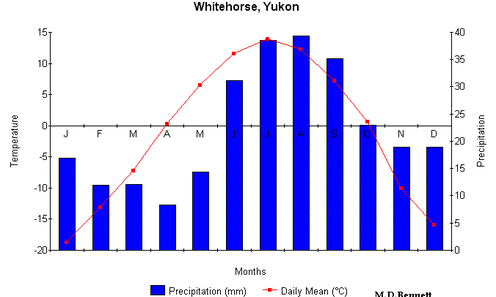The Jurassic Period, a segment of the Mesozoic Era, spanned from approximately 201 to 145 million years ago. Often heralded as the “Age of Giants,” this era witnessed an astonishing proliferation of dinosaur species, whose formidable sizes and diverse adaptations have captivated imaginations for generations. However, the allure of the Jurassic extends beyond its awe-inspiring megafauna. The climatic conditions during this epoch played a pivotal role in shaping not only the ecosystems inhabited by these creatures but also the very composition of the Earth’s atmosphere and geological landscapes.
During the Jurassic, the Earth experienced a climate that can be characterized as generally warm and humid. Unlike today’s environment, which is significantly impacted by human activity, the Jurassic climate was primarily governed by natural geological processes and the positioning of continents. At the onset of the Jurassic, the supercontinent Pangaea was in the midst of breaking apart into two smaller landmasses: Laurasia in the northern hemisphere and Gondwana in the southern hemisphere. This tectonic activity drastically altered ocean currents and climate patterns, fostering an environment ripe for biodiversity.
Examine, if you will, the considerable geophysical transformations occurring during this period. As Pangaea fragmented, new ocean basins formed, augmenting global sea levels and creating extensive shallow marine environments. These warm, expansive seas provided ideal habitats for various marine organisms, from ammonites to early sauropods that thrived in both terrestrial and aquatic ecosystems. The rise in sea levels also contributed to increased humidity across the continents, allowing lush vegetation to flourish. Ferns, cycads, and ginkgoes adorned the landscapes, forming extensive forests that anchored the food web.
This botanical abundance translated into a climate teeming with life. The high CO2 concentrations coupled with a predominance of lush forests generated a greenhouse effect, which in turn fostered a warmer climate. Some researchers estimate that average global temperatures during the Jurassic exceeded modern-day averages by several degrees Celsius. In essence, the Jurassic was characterized by a mild and temperate climate, conducive to the growth of gigantic flora and fauna. With dazzling diversity, ecosystems in the Jurassic reflected a vibrant interplay between environmental conditions and the organisms that adapted to them.
However, the climate was not uniform throughout the period. Regional variations in temperature and rainfall contributed to a patchwork of diverse ecosystems. Arid regions existed alongside tropical rainforests, creating extensive habitats that could support a myriad of species. For example, in areas that would eventually become North America, we find evidence of both deserts and wetland ecosystems, indicating a highly dynamic climate that changed in tandem with tectonic shifts and oceanic currents.
The Jurassic climate also fostered a unique interaction between the land and atmosphere. Geological evidence suggests that climates were punctuated by periodic fluctuations, resulting in both hot and humid intervals as well as cooler, drier phases. These changes are indicative of a climate system that was complex and responsive, driven by cyclical astronomical phenomena and volcanic activity. The prevalence of volcanic eruptions during this period contributed to short-term changes in atmospheric conditions, impacting everything from marine life to terrestrial environments.
A notable consequence of the Jurassic climate was its influence on the evolution of dinosaur species. The availability of diversified habitats played a crucial role in fostering the evolution of various morphologies and behaviors among dinosaurs. As larger, endothermic animals began to emerge successfully, adaptations that allowed for efficient thermoregulation were paramount. These adaptations allowed dinosaurs to thrive in an environment that would otherwise pose challenges to their survival, particularly during the transitional temperature swings associated with changing climatic conditions.
The interdependence of climate, geology, and biology leads us to consider broader implications regarding carbon cycles. The Jurassic Period’s revelatory landscapes were dynamic, shaped by carbon sinks and sources that masked atmospheric fluctuations. Vegetation acted as a carbon sink, drawing down significant amounts of CO2 from the atmosphere, thus balancing the pronounced greenhouse gases released by volcanism. Through this symbiotic relationship, the Earth achieved a level of climatic stability that allowed for radiant biodiversity.
As we examine the climatic conditions of the Jurassic, it is imperative to acknowledge the lessons they impart regarding resilience and adaptation. The Earth underwent cataclysmic changes during this era, yet life not only persisted but thrived. The health of ecosystems is often contingent upon their adaptability to changing conditions, an increasingly vital lesson in our contemporary age of rapidly advancing climate change and environmental degradation.
Today’s environmental challenges compel us to reflect upon the history of Earth’s climate. The Jurassic climate, with its warm, humid conditions and flourishing ecosystems, serves as a poignant reminder of the interconnectedness of climatic systems and life forms. It underscores the necessity for thoughtful stewardship of our planet. As we stand at a critical juncture in history, let us draw inspiration from the past, recognize the need for sustainable practices, and commit to fostering a resilient future for all life on Earth.
In conclusion, the climate of the Jurassic period was not merely a backdrop for the Age of Giants; it was a dynamic and influential force that shaped the evolution and differentiation of life during a time of unparalleled biological abundance. Understanding this ancient climate offers crucial insights into both past and present environmental challenges, reminding us of our role as stewards of the planet in an era where understanding and action are paramount.








